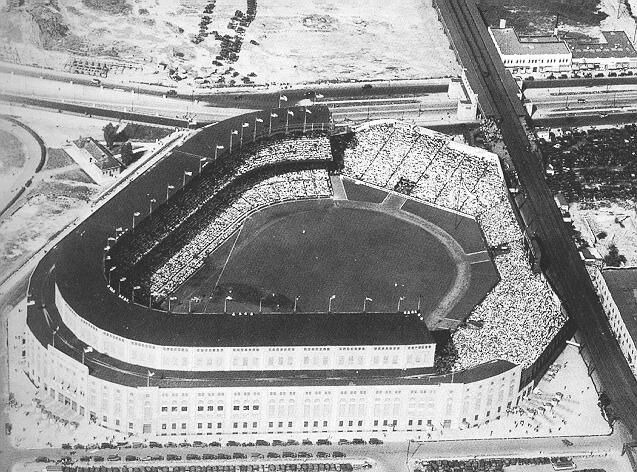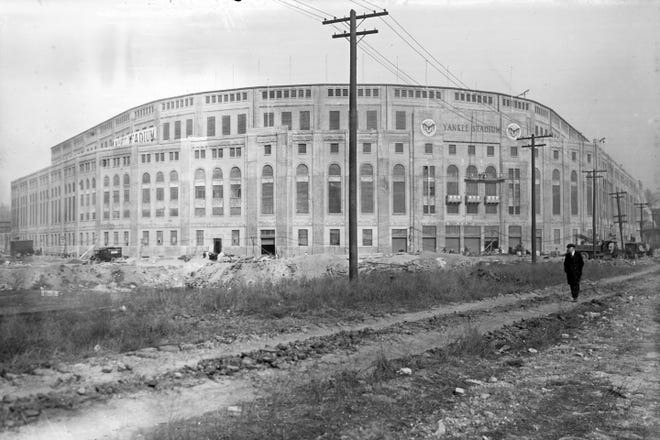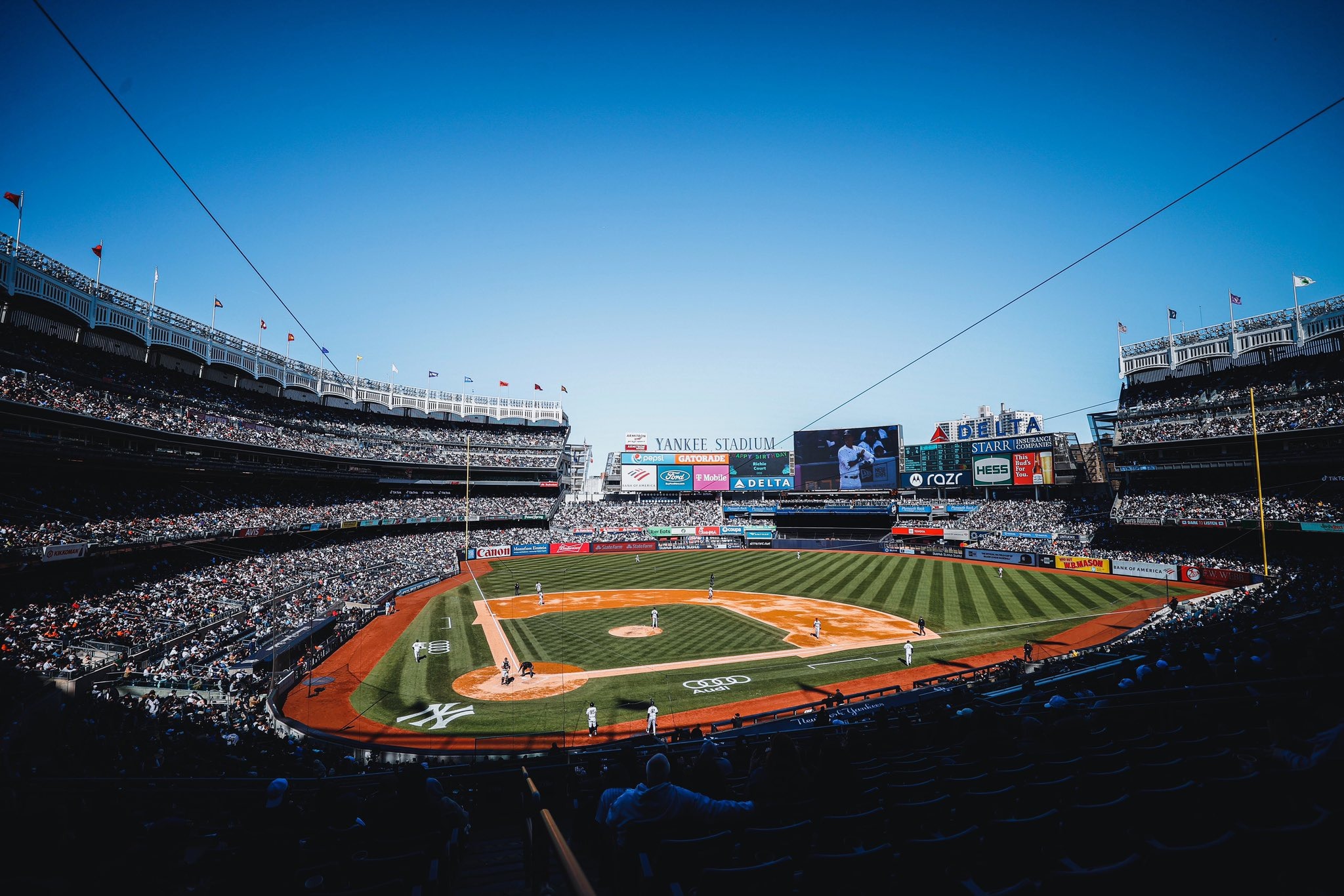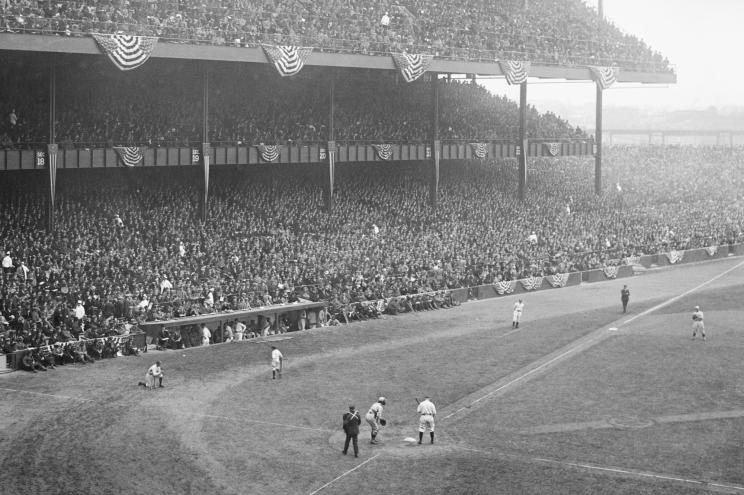Sports
The First Game At Yankee Stadium 1923
For baseball fans, opening day is always a day to celebrate.
But for the 74,200 people cheering from the stands at Yankee Stadium 1923, it was more than just an opening day.
The inauguration of Yankee Stadium 1923
In 1923 Ruppert owned the team outright, and Huston sold him his shares at $1.5 million. By then plans were in motion to build the Yankees a new home — thanks to the Astor family.
In the early spring of 1922, Ruppert bought a ten-acre lumberyard in the West Bronx, across the Harlem River from the Polo Grounds.
“One of the reasons the site was chosen by Ruppert was to irritate his former landlord,” writes Harvey Frommer. “Another reason is that the IRT Jerome Avenue subway line snaked its way virtually atop the Stadium’s right-field wall and provided ease of transportation for fans.”
Work began in May of 1922. Although some saw the field as a boondoggle “Rupert’s Folly,” some said many in the sports world anxiously waited for its completion. Tex Rickard, years ago would build his own Madison Square Garden, even considered the Yankee Stadium 1923 for the staging of world-class boxing matches. It was also eyed for the ancient Army-Navy rivalry.
But mostly people anticipate that the field will be a proper showcase for Rupert’s star player. The stadium, “the greatest collection of concrete and steel that baseball has ever known,” will very quickly earn the nickname The House That Ruth Built.
Its opening was heralded with a tidal wave of sports hyperbole from every American newspaper. The Times declared “In the busy borough of the Bronx, close to the shore of Manhattan Island, the real monument to baseball will be unveiled this afternoon – the Yankee Stadium 1923, erected for $2,500.00, seating some 70,000* people and included in its broad reaches of concrete and steel the last word in baseball arenas.”
Its capacity was around 58,000

The Yankee’s first game here was on Wednesday, April 18, 1923, and appropriately, it was against the Boston Red Sox. New York Governor Al Smith threw out the ceremonial first pitch.
In the historic first game, the Yankees defeated the Boston Red Sox 4-1. It was historic because the Yanks were the American League champions, they had the leading gate attraction in Babe Ruth, and the new stadium had by far the largest seating capacity of all Big League parks.
The game moved slowly until the third inning when Ruth broke it open with a three-run homer off Howard Ehmke. The crowd of 74,000, the largest in baseball history up to that time, went crazy with delight. The Babe beamed from ear to ear and waved his cap to his many admirers as he jogged down the home stretch. No wonder they called it the “House that Ruth Built.”
With two out in the ninth, the game was held up as the crowd swarmed on the field, around Ruth and others. Umpire Tom Connally finally let the game proceed and George Burns fanned for the final out.
A dozen of the 20 players in that game have passed on.
Among the eight survivors are the rival pitchers, Ehmke, and Bob Shawkey, who won the first game in Yankee Stadium 1923 and scored the first run; Joe Dugan, who knocked in the first run; Bob Meusel, who hit the first double; and Red Sox first sacker Burns, who collected the first hit and made the first error.

Today’s Yankee Stadium
Yankee Stadium presently accommodates a not-so-huge crowd of 46,537. The exterior boasts grandeur, and the field resonates with the essence of the old park, featuring a shorter right-field distance and a wider (though not as extensive as in the past) left-center field.
Appel expresses his contentment, stating, “I’m good with it,” while still relishing the historical connection to Joe and the Babe whenever he’s at the park. Notably, the iconic frieze around the stadium has been reinstated, showcasing a nod to the Yankees’ rich history.


